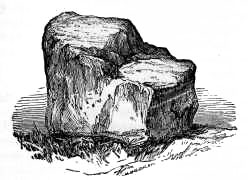Second Siege of Limerick
Tyrconnel died at Limerick, of apoplexy, while he was preparing to put the city into a state of defence. He was a faithful and zealous supporter of the royal cause, and devoted to the Irish nation. His loyalty has induced one party to blacken his character; his haughty and unconciliatory manner prevented his good qualities from being fully appreciated by the other.
The real command now devolved on M. D'Usson, the Governor of Limerick. Active preparations for the siege were made on both sides. Ginkell contrived to communicate with Henry Luttrell, but his perfidy was discovered, and he was tried by court-martial and imprisoned. Sixty cannon and nineteen mortars were planted against the devoted city, and on the 30th the bombardment commenced.
The Irish horse had been quartered on the Clare side of the Shannon; but, through the treachery or indifference of Brigadier Clifford, who had been posted, with a strong body of dragoons, to prevent such an attempt, Ginkell threw across a pontoon-bridge, and sent over a large detachment of horse and foot, on the morning of the 16th, which effectually cut off communication between the citizens and their camp. On the 22nd he made a feint of raising the siege, but his real object was to lull suspicion, while he attacked the works at the Clare end of Thomond-bridge. The position was bravely defended by Colonel Lacy, but he was obliged to yield to overpowering numbers; and the Town-Major, fearing that the enemy would enter in the mêlee with the Irish, drew up the bridge.
The English gave no quarter, and, according to their own account, 600 men were slaughtered on the spot. This was the last engagement. Sarsfield recommended a surrender. Resistance was equally hopeless and useless; it could only end in a fearful sacrifice of life on both sides. A parley took place on the 23rd, and on the 24th a three days' truce was arranged. Hostages were exchanged, and a friendly intercourse was established. On the 3rd of October, 1691, the Treaty was signed. The large stone is still shown which was used as a table on the occasion. What that Treaty contained, and how it was violated, are matters which demand a careful and impartial consideration.

The Treaty Stone, Limerick. This stone was placed on a handsome pedestal a few years since, by the then Mayor of Limerick.
